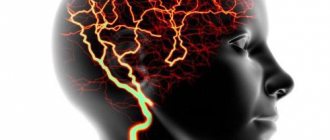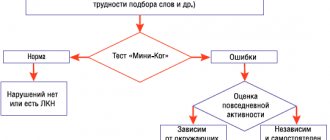Split personality is a disease that is clearly characterized by the manifestation of another personality in a healthy person. To put it another way, these are cases when a person can react differently to one situation. Another personality takes over him and this is a terrifying factor for others. If the disease begins to progress, then a person may simply forget what happened to him a few minutes ago and with whom he had a dialogue. Sometimes it seems that he lives for a long time in two parallel universes. Therefore, we offer qualified assistance and consultation regarding any psychological illness.
A few facts about bifurcation
- In almost all cases, the disease has direct connections with psychological disorders that occurred in childhood up to 9 years;
- Women are more likely to suffer from violence, which is why the disease is more common among them;
- 20% of patients with this disease used psychotropic drugs;
- More than half of patients with multiple personality disorder have attempted to commit suicide, and the situation worsens during sleep.
Split personality disorder is an outdated name. But a few centuries ago, this syndrome was called “possession by the devil” of the human body and his consciousness. People were sure that supernatural forces were beginning to take over a person and we were obliged to help him. The second name appeared relatively recently and is not compatible with reality. People believed that such persons were possessed by devils and controlled by them. Treatment methods did not exist at that time, but demons were cast out in the most cruel ways. Will not go into details.
Dissociative identity disorder was first described by the Swiss physician Paracelsus back in the 16th century. The discovery stopped there for years. Officially registered only in 1975. Many doubted the existence of the disease and were sure that patients were simply playing a role. Today, split personality is officially recognized as a disease and requires mandatory treatment.
What kind of disease is this?
Split personality is a special mental state in which a person feels himself to be several entities.
The scientific name of the disease is dissociative identity disorder , which is part of a group of mental phenomena with the isolation of certain functions of consciousness from an integrated (general) idea of oneself and the world.
These separate personalities exist autonomously from each other and may never intersect in a person's thoughts and actions. That is, in the subconscious all the “characters” are adjacent, but in the consciousness they “appear” one by one.
The mechanism of development of this process has not been sufficiently studied; it is assumed that split personality is formed under the influence of a number of factors:
- hereditary predisposition;
- mental trauma;
- style of upbringing in the family - hypoprotection;
- emotional disorders;
- fears and anxieties;
- harsh system of punishments in childhood;
- physical and (or) psychological violence;
- excessive danger, kidnapping;
- “collisions” with death in accidents, during surgical operations, during traumatic injuries, during the “departure” of loved ones;
- virtual addictions to books, films, computer games;
- long stay without sleep and rest;
- chronic stress;
- poisoning with toxic substances;
- drug addiction, alcoholism;
- severe infections and diseases of the body;
- heightened sense of guilt, protracted internal conflicts, complexes, shyness.
In the 90s, American scientists, while studying dissociative disorders, discovered their connection with facts of violence in the biographies of patients (in 98% of cases out of 100, of which 85% were officially confirmed).
Symptoms, signs of split personality and treatment of the disease
Symptoms include:
- The patient may move away from a specific situation and become someone in certain life episodes. If we take into account the second personality, then it differs from ordinary behavior and physical actions. For example, if in ordinary life he is calm, then he may begin to behave relaxed. Characteristic signs are that the person begins to speak in a voice that is not his own and new mannerisms appear.
- The appearance of personalities directly follows from the social circle in which a person is currently located. Many peoples believe that this is a manifestation of obsession. A person can organically feel absence, loss of space, and after something happens to him, he simply does not understand who led him.
- He begins to forget the moments that happened. This can negatively affect work activity, because moments of life begin to disappear from memory in fragments.
- Often patients say that they hear some voices. Often, at the moment the person is in a trance. The peculiarity is that if the patient has been in a similar position at least once, he wants to return to it again. This feeling of something new does not leave you alone. It acts like a drug and affects your mood and lifestyle.
- Increased depression and anxiety, mood swings are possible. It is often mentioned that such patients have nightmares. Approximately 60% of people attempt to die voluntarily.
Prognosis and treatment
There is an opinion among psychiatrists that the earlier nervous personality disorder occurs, the worse the social prognosis. It should be noted that bifurcation is the most dangerous syndrome. It is almost impossible to achieve complete recovery after a mental illness of this type. First of all, this is due to the fact that each of the individuals may have psychological deviations.
The main methods of treatment are cognitive and rational, when a specialist works to develop criticism of his own condition. Therapy is carried out exclusively by psychologists in the behavioral field. It is very important to try to reproduce all the traumas that could have occurred in communication with your parents, with your significant other, with friends. This will help you understand why there was a need to hide behind two masks.
The essence of the methods is that the doctor is constantly trying to collect all the split-off personalities from a person and combine them into a single form. An excellent mechanism for gathering information from parts is hypnosis. By the way, hypnosis is a double-edged sword; it can both help the patient understand the problem and deal a blow to the psyche. In a word, this is jewelry work that should be performed by a good professional.
Drug treatment for multiple personality disorders is used to eliminate secondary consequences that occur. If you are depressed, you need to take antidepressants. Treatment with several drugs at the same time is possible.
Prevention
Because dissociative identity disorder is a mental illness, there are no preventive measures. But since the main cause is child abuse, it is important to avoid traumatic situations in childhood. International organizations and social services are working to identify and eliminate violence. If severe stress and psychological trauma have occurred in a child, it is important to contact a specialist in a timely manner, which will prevent the development of dissociative disorders in the future.
Treatment of split personality
If we compare the disease with third-party mental disorders, then this is a much more serious situation. Medicines are necessary to eliminate superficial symptoms. The main method is psychotherapy.
The task of a psychologist is to collect a person according to all the “split off” individuals. In this case, long conversations, hypnosis and drugs that help to stir up the patient help. This mechanism can both bring results and, on the contrary, aggravate the situation. Therefore, when choosing a doctor, we recommend that you be careful. Only a good professional can cope with the task. Doctors are confident that it is almost impossible to permanently cure split personality; it tends to remain in the body. This may take years and recovery may not be complete.
Causes and diagnosis
As practice shows, the disease begins to develop against the background of a stressful state. Difficult moments in life, psychological trauma in adolescence force our psyche to build defense mechanisms and change perceptions. The brain experiences a blockage on the main personality and ultimately ends in a split, which we talked about. So it turns out that one person is sleeping, and the other is having fun in the club.
Dissociation of the body is a normal phenomenon that is inherent in nature. But violence is not the only contributing factor to the onset of the disease. Several criteria can be noted:
- Easy-going people who love to be in the center of events and attract attention;
- The presence of defects in the functioning of the nervous system;
- Use of psychotropic substances, alcohol;
- Side effects from anesthesia;
- Prolonged stress that people often experience during military operations, tsunamis, floods and other disasters.
It should be noted that at the first examination the doctor may not notice any abnormalities. A clear symptom is memory problems, which occur in older people. This is why doctors do not like to make this diagnosis.
DID is most often confused with schizophrenia. But there are a huge number of differences between the two syndromes. Schizophrenia is manifested by the presence of hallucinations and a person’s belief in something supernatural. This is a disease that completely destroys from the inside, but does not create doubles.
There are also people who believe that split personality is just a wild fantasy. Diagnosis of the disease can be after numerous tests, observations and hypnosis. To make a diagnosis, doctors may use disinhibiting drugs.
General information
In psychiatry, a special place is occupied by dissociative disorders (Latin dissociare “to separate from the community”), which include dissociative amnesia , dissociative fugue , dissociative stupor , trance and obsession , as well as multiple personality disorder .
Signs that characterize dissociative and conversion disorders (hysterical): partial or complete loss of integration between memory, awareness of personality and control of body movements. Normally, there is conscious control over memory and sensations and at the same time over movements. In dissociative disorders, this control is significantly impaired. The main function of dissociative disorders is to isolate negative experiences. In psychiatry, the term “split personality” is outdated. What is the current name for split personality? The term used is “dissociative identity disorder” or, according to the classification, multiple personality disorder. This type of disorder is characterized by the presence in one person of more than two personalities (these are called alter personalities, or identities), which do not manifest themselves simultaneously. This condition is post-traumatic stress disorder and a way of protecting yourself from the difficulties of real life. Dissociative disorder is the loss of control of the “I” over subpersonalities that are under its control in a normal state.
The disease multiple personality disorder is defined on Wikipedia as a rare mental disorder in which the patient seems to experience a split, a disintegration of the personality as a whole and some part of the whole gets out of control. There is a main principle - separation and alienation. The entire structure is destroyed from the inside. One gets the impression that in one person there are several partial personalities (subpersonalities or alter personalities), which at certain moments replace one another. They are not personalities in the broad sense - they are artificial parts of the personality that help cope with distress.
Wikipedia notes that different identities are expressed to varying degrees, one of the personalities is dominant and both are unaware of each other's existence. Each personality is characterized by its own memory and behavior and does not have access to the memories of the other. The change from one personality to another occurs suddenly and is directly related to events that traumatize the psyche. The transition from one identity to another is possible for various periods - from several minutes to years. Subsequent shifts are also tied to stressful and dramatic events, and also occur during therapeutic sessions of relaxation or hypnosis. The personality that prevails in a given period completely subordinates a person’s behavior, and it is strikingly different from the personality of the owner.
Dissociative identity disorder can appear at any age, from childhood to old age, but is most common in adolescence and young adults. This disorder is more prevalent in women (ratio 1:10). There is evidence that the disorder may be hereditary: close relatives of the patient have a predisposition to this pathology. Perhaps this disorder is not rare, but cases of patients turning to specialists are rare. This disorder is subject to correction. Schizophrenia is also manifested by the presence of multiple personalities, and it is important for psychiatrists to understand and not impose the label of this disease on the patient for life.
How to identify split personality yourself
Almost everyone can be dislocated when, for example, they show imagination, imagine themselves talking to someone or having their head in the clouds. Many kids invent imaginary friends, play with them and come up with various stories. This is not a paranormal phenomenon. The problem begins at the moment when a person cannot manage his personalities and switch in time. It can suddenly change from one to another. Scientists cannot say what caused this phenomenon.
During a person’s change from one personality to another, the following may be observed:
- A sharp change in character, changes in gestures, facial expressions, handwriting, voice, taste preferences. The person may begin to tell other stories from life. Often the opposite person has completely different habits and a difference in outlook on life.
- Ceases to control behavior, gestures, statements and actions. He can cry, be depressed, and after a few minutes burst into laughter to such an extent that it will be difficult to stop him.
- May manifest as incoherent speech, amnesia, or grunting.
- Memory lapses that eliminate memories, events that happened just the day before, and even habits. It is usually worth sounding the alarm when a person begins to forget too much information.
- One person may suddenly turn on and off. Therefore, even with a psychotherapist, he can tell completely different stories, simply because he does not remember what he said earlier.
- Poor health, insomnia. This could be a sudden tingling in the abdomen, problems with the digestive system, or a migraine.
But, even if most of the symptoms coincide, they are more often diagnosed with depression, anxiety disorder, and an apathetic attitude towards life. This only complicates the selection of methods.
Treatment takes a lot of resources and effort. Sometimes it can take a lifetime. But it is necessary to alleviate the patient’s condition and reduce the manifestation of symptoms. You can start treating the disease after appointing a qualified specialist. All information regarding treatment is given as a reference and is not a guide!
Manifestations of the disorder
Symptoms of the disease are manifested by the division of the subject's ego into several completely different identities. Such subpersonalities differ in gender, age, national characteristics, have different temperaments, mental abilities, and life views.
Newly formed identities exhibit their own characters, differ in names, gestures, gait, and facial expressions. Dramatic transformations take place, changing even the handwriting - each newly formed object has its own, unique one.
Individuals are completely independent, even differing in their illnesses. For example, one suffers from farsightedness, the second has excellent vision, but shows signs of psychopathy.
The minimum number of such ego states is 2, the maximum is unlimited, sometimes reaching hundreds. The average number of alters is 8–2. The emerging “characters” alternately and suddenly replace each other. The provocateur is a stressful event.
An activated subpersonality is usually unable to remember what happened before its next appearance and is unaware of the existence of other identities. But, in the presence of multiple personalities, reaching dozens, an individual is able to know about the presence of others. But this identity is not basic, bearing the original name of a person. The basic identity is preserved, but is no longer leading. Individual personalities conflict with each other.
New individuals take on child and adult guises. Their behavior can embody the hidden desires of the basic personality, commit immoral acts, be characterized by anger, joy, and take on various forms.
The first official description of the disorder, by the physician Antoine Despin, tells the story of a little girl of eleven years old. The baby was partially paralyzed and suffered from severe pain and convulsions. The doctor described the girl’s supposed trance state, when the little martyr became an angel. The angel freely jumped, ran, swam, loved food rejected by the girl, and asked adults to fulfill the baby’s wishes.
Patients are able to hear different voices in their heads, talking and arguing with each other. The subject perceives them as a conversation with himself, not suspecting that he is capturing the negotiations of several subpersonalities.
The number of ego states can increase. The individual develops new faces, trying to cope with a certain situation.
The famous film “The Three Faces of Eve” illustrates exactly this situation. A woman visited a psychiatrist - an ordinary, quiet housewife, a devoted wife, complaining of memory loss and severe headaches. While conducting a session, the doctor notices sudden changes in the woman’s behavior: the modest, faithful wife has turned into a vulgar, depraved girl. Soon the following identity emerged: a highly intelligent, self-possessed, intelligent lady. Psychiatric sessions revealed hidden faces.
The film is based on real events depicting the life of Chris Costner Sizemore. The woman actually suffered from dissociative disorder. Chris dedicated 2 books to her own illness.
Interesting fact: the producer signed the contract for filming the film with all three people, Chris. The three signatures were different.
To make a diagnosis of dissociative identity disorder, the following criteria are required:
- the presence of at least two independent ego states that differ radically in their manner of behavior, perception of the environment and attitude towards it;
- alternating dominance of identities over the individual’s personality;
- memory lapses;
- the condition is not caused by external factors - alcohol, smoking, drugs, toxic substances, or other mental disorders.
Drug treatment
Among the drugs can be noted:
- Neuroleptics. They help reduce the progressive effects of the disease, for example, by eliminating the most dangerous symptoms and signs - manic behavior and hallucinations. They are an excellent drug for reducing stress, relax the body, help you fall asleep and not think about the problem.
- Tranquilizers. Do not use without a doctor's prescription! Otherwise it could cost your life! This drug can push a person to suicide, so it is prescribed under the supervision of a doctor.
- Antidepressants. They help cope with depression, apathy, reluctance to live, loss of interests and hobbies. They help fill yourself with energy and fight for life with new strength.
Electroconvulsive technique
Appeared in the 30s of the last century and was used to treat schizophrenia. There was an assumption that the brain, under the influence of the disorder, was not able to create certain impulses and they were created artificially.
Method of use: several electrodes were attached to the head, which had a short-term effect on the brain. The main goal was not to have a traumatic effect on the brain, but to have an effect on it. Within two months, doctors were able to achieve a positive result.
What to do if a person refuses treatment?
You need to understand why he does this. It may take time to talk about the problem. Try to explain that there are no difficulties in the course of treatment and you will easily go through the path together. You shouldn’t tell scary stories, but you don’t need to lie that you’ll be cured in a month.
You can call a doctor yourself, without permission. You need to write a statement that will be the reason for the home inspection. If the doctor sees that the patient’s condition does not have symptoms that threaten his life and those around him, he is asked to sign papers for the course of treatment, but you have the right to refuse. Involuntary hospitalization is possible when a person is in a complex psychological disorder, and his actions can harm loved ones.
Criticism of DID
Now a little about criticism of everything that is happening.
Supporters of the diagnosis, as well as those who like to titillate the nerves with mysticism, have an impressive camp of skeptics. Firstly, due to the very rare cases of such radical dissociation, its existence was generally questioned for quite a long time. According to the practice of psychotherapists, the number of personalities in most diagnoses is insignificant, but in exceptional cases their number can even reach several hundred. None of the modern postulates about the functioning of the brain and memory can be correlated with so many autonomous alter egos. American psychologist Professor Spanos, without denying the existence of the disease, argues that most cases are aggravated, if not caused, by the attending physicians themselves and the patient’s environment. In addition, one’s own “I” is formed thanks to the socio-cultural circle, and there is no mysticism or metaphysics in this. This also includes false memories of violence. A circle of skeptical psychiatrists accuse their colleagues of influencing the patient with their stereotypes. It often turns out that the disease forms and progresses in therapy rooms. False childhood memories of sexual abuse are also common, up to 85%. This means that split personality does not necessarily occur due to childhood trauma. Doctors say that the basis of a person’s multiple alter egos is a product of his life in society, and the reason for everything is collective psychology, and nothing else. But the most serious and objective accusation is the fanning of hysteria around this disorder by the media and society itself.
Until 1976, when the film adaptation of Sybil was released, approximately eighty cases of the disease were known. After the release of the film, there were more than forty thousand people with such a diagnosis or suspicion of it, and this is only in North America. Not long ago, Dr. Dennett Brown, founder of the International Society for the Study of DID, was stripped of his license for using hypnosis and drugs to... convince a patient that she was destroying people in batches in bloody rituals. According to the woman, she was told that she had three hundred personalities, including Satanists, rapists and cannibals. American judicial practice is a rather controversial thing, you can figure out who wanted to sue for how much money, but there is a clear precedent.
Life scenario of personality formation
How to live with a person who has duality
Multiple personality syndrome negatively affects not only the patient, but also loved ones. A few recommendations for those who want to establish a relationship with a person who has ADHD:
- Down with rose-colored glasses. This is a disease that will take many years to treat. Maybe even in your lifetime you won’t be able to get rid of it completely.
- Be patient. The patient unknowingly began to suffer from DSD; everything happened due to a coincidence of serious circumstances in life.
- Get information from professionals. A good psychiatrist will be able to help in resolving the issue, but not friends who read somewhere that everything can be cured by using a magic pill.
- Don't panic! Keep in mind that when he switches from one personality to another, complex processes occur in the body. This is a real trauma that is difficult to overcome. Try to keep yourself in control and control the situation.
- Create an environment for him that will not be mentally disturbing. Try to reduce the number of nervous breakdowns.
- Pay attention to his condition. During this time, replenish your supplies of medications that block further development of the disease.
- Keep the situation under control. Pay attention to the moment at which it begins to “switch.” It could be a fit of rage.
- Don't take his words to heart. They just have to understand that at the moment his behavior is uncontrollable.
- Rest. Caring for someone with a nervous disorder is exhausting, so give yourself time to rest.
A huge number of films have been made about people with DSD, where they show their inner world in detail and demonstrate the disease. In life, everything happens differently. Two personalities are a set of symptoms that absolutely do not guarantee that a person will turn into an uncontrollable maniac. Many patients with dissociative identity disorder are completely harmless to society.
These are people with whom you can find a common language. If you choose the right treatment, the disease will not develop further. If we analyze the information from the site, we can say that such people are safe for society.
Bifurcation is a chronic disease, most often requiring more than five years to heal. Some people are cured, others are not.
Now you know that the body, in fact, can accommodate several personalities at the same time. And the most important rule is that they get along well and live like this for decades. The body can be ruled by one entity or another. The period of “reign” can last from a few minutes to months.
Multiple dissociative identity disorder
This disorder is characterized by the presence of two or more different identities within the same person. These multiple personalities may have different names, behaviors, memories, and voices. People with dissociative identity disorder (DID) will experience gaps in autobiographical memory, including personal details, daily activities, and traumatic events. Their symptoms also lead to significant problems in daily life, including work, school and relationships.
DID is usually diagnosed in women. However, the number of men with the disorder may be higher than reported because they are more likely to exhibit aggressive behavior rather than the memory gaps typically seen in DID.
Suicidal behavior and other types of self-harm are especially common in people suffering from this type of dissociative disorder. In fact, more than 70% of people with DID have attempted suicide.
How to detect identity substitution in time?
During a person's transition from one state, a brief fainting may occur. This is an instant action that goes unnoticed by the people around him. Even the patient can ignore this and live quietly in a similar situation for several years. In this case, medical assistance is necessary!
Split personality has a direct connection with the brain. With the processes that take place in it. But they have not been studied. Doctors cannot give an exact definition and answer to the phenomenon. It can be diagnosed and treated for multiple personality disorder for years, but there is no guarantee that a person will be able to overcome the disease completely. We can only guess about the origin of this process. There is an assumption that otherworldly forces were involved here...











